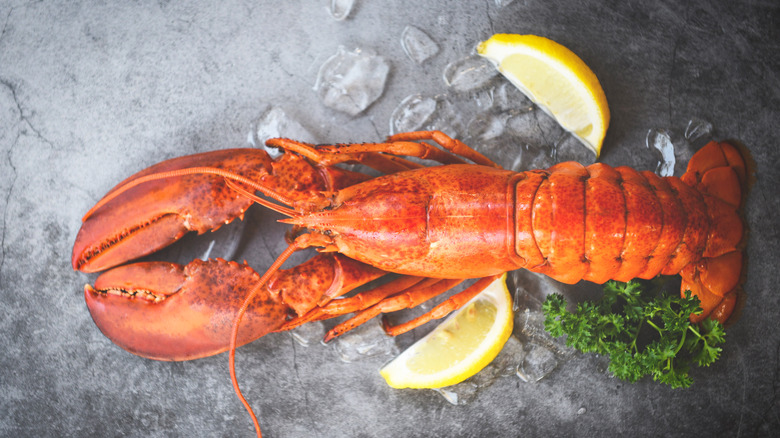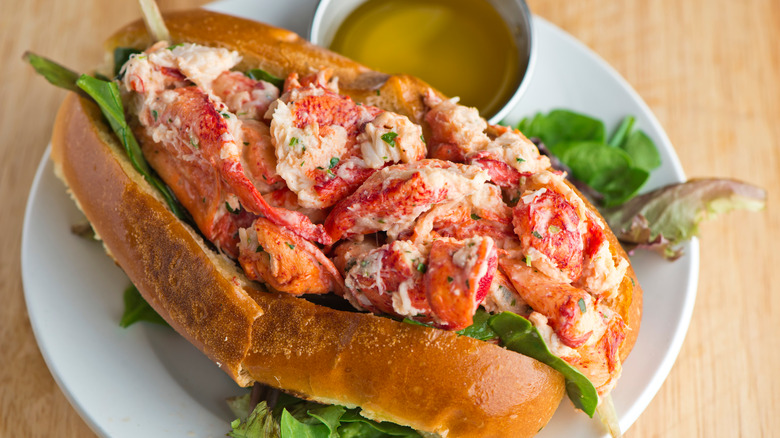Why Lobster Was Served To Prisoners During The Colonial Era
Whether piled high on a buttery bun, folded into mac and cheese, or cracked open and dipped into melted butter at a seafood boil, lobster has long been considered one of the most delicious and luxurious ingredients around. In recent years, the cost of this covetable — and craveable — ingredient has reached new highs, as the popularity of this hard-shelled ocean dweller just continues to grow.
There's no denying that today lobster is considered king of the crustaceans, with a high-end reputation that makes it the main event of any seafood dinner or clambake. Often held alongside caviar, foie gras, and filet mignon as one of the most lavish and expensive ingredients, lobster is universally considered the most premium item on any seafood menu. However, at one point in American history lobster was so abundant that it was considered food fit for a prisoner, rather than a king.
When European settlers first landed on the coast of New England in the 1600s, lobsters were washing up in such abundance that they would form two-foot high mounds of crustaceans along the eastern shorelines. The settlers took to collecting the crustaceans by hand until the late 1700s, when specialty boats called "smacks" began the transport of live lobsters in Maine. In the early days of the original colonies, lobster became a key part of the everyday diet, even showing up on the table at the first Thanksgiving alongside clams and mussels (via Smithsonian Magazine).
Tourism helped revitalize lobster's reputation, and make it into a bonafide delicacy
However, while the abundance of lobster made it a reliable and integral source of protein for early settlers, it also earned them a reputation as a poor man's protein, available in high quantities for dirt-cheap prices. Lobster became a common colonial-era source of food for those considered at the time to be lower-class, including apprentices, servants, slaves and, yes, prisoners.
It wasn't until the 1880s that lobster experienced a rebound in reputation, largely thanks to tourists who took advantage of more accessible train prices to take trips out to coastal cities and try the fresh lobster that was only available in canned form in landlocked areas (via Business Insider). These tourists were able to appreciate the rich, supple meat and delicate flavor of the lobster free from any negative connotations. This tourism boost inspired a slew of restaurants to work lobster into their menus, and drove the price of lobster up as demand grew and grew.
As History relates, the lobster industry got another boost during World War II, when lobster was declared a delicacy and therefore not rationed, allowing wealthy shellfish lovers to chow down on as much lobster as they wanted at a time when many food products were scarce. Prices of lobster continued to skyrocket with demand, and have remained high ever since, even in years when the lobster harvest is more abundant.

